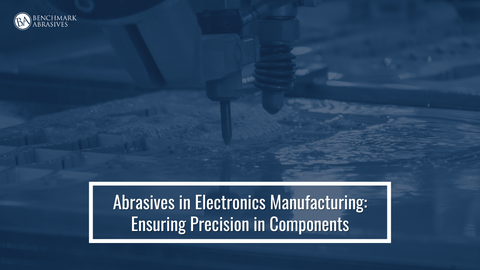
Abrasives in Electronics Manufacturing: Ensuring Precision in Components

Applications for abrasive products in electronics and photonics are numerous. From mounting, to precise grinding and polishing of devices to a designated site for failure analysis, to production lapping and polishing of wafers.
ELECTRONICS: SUPERABRASIVE POWDERS, SLURRIES, AND COMPOUNDS
Manufacturers provide a variety of quality abrasive products, such as silicon carbide, boron nitride, diamond compounds and paste, and dry diamond suspension and slurries, specially made for electronics applications. The goods are designed to fulfill the strictest quality requirements and guarantee our clients receive the best possible outcomes.
Diamond powders are especially well-liked in the electronics industry because of their robustness and adaptability. They can be applied to many different processing tasks, such as grinding, polishing, and finishing glass and metal. In electronics, slurries, and compounds are also frequently utilized for tasks like polishing and lapping. Our boron nitride abrasives are incredibly durable and versatile, making them an excellent choice for anyone looking for a strong substance that can handle challenging tasks.
TYPICAL ABRASIVES IN ELECTRONICS
The electronics sector heavily relies on conventional abrasive products such as aluminum oxide (alumina), boron carbide, cerium oxide (ceria), silicon carbide, and silicon dioxide (silica). These abrasives have special qualities that make them perfect for a variety of manufacturing operations, including crucial ones like production lapping and polishing of wafers and polishing of devices to a specific location for failure analysis.
For mounting equipment to stay motionless throughout testing or analysis, a high level of precision is needed. Because of their great rigidity, hardness, and dimensional stability, silicon carbide and aluminum oxide (alumina) are frequently employed in mounting operations. Because of its low density, great hardness, and resistance to chemicals, boron carbide is perfect for mounting sensitive specimens, just as ceramics and semiconductor materials.
For the precise grinding and polishing of electronic components, common abrasives are silicon dioxide (silica) and cerium oxide (ceria). Because of its exceptional lapping efficiency, cerium oxide is a great choice for polishing mirrors, lenses, and precision glass optics. Conversely, silicon dioxide has superior surface consistency, making it a great polishing abrasive for electronic components, especially silicon wafers.
Silicon carbide and aluminum oxide are two common traditional abrasives used in wafer fabrication. The semiconductor and electronics industries rely heavily on silicon wafers for the production of integrated circuits, and the cleanliness and quality of their surfaces are vital. Abrasives are an important part of the process because they polish the front and rear surfaces of the wafer, eliminating any imperfections on the surface.
CONVENTIONAL AND SUPER ABRASIVE TECHNOLOGIES FOR THE ELECTRONIC MANUFACTURING PROCESS
To maintain optimal quality and performance, electronics production requires the highest level of precision and accuracy at every stage of the process. The production of electrical and photonic components has been shown to require both superabrasive and traditional abrasive processes.
Because of their exceptional hardness and excellent thermal stability, superabrasive materials like diamond and cubic boron nitride (CBN) are perfect for cutting, grinding, polishing, and lapping hard and brittle materials like ceramics, glass, quartz, sapphire, and other semiconductor materials. This material gives components consistent, accurate surface finishes, which are crucial for improving the functioning and performance of electrical and photonic devices.
In the production of electronics, conventional abrasive materials such as silicon dioxide, silicon carbide, and aluminum oxide are also commonly utilized. These materials are excellent for shaping and smoothing a variety of materials because of their great cutting efficiency and exceptional workability.



































































